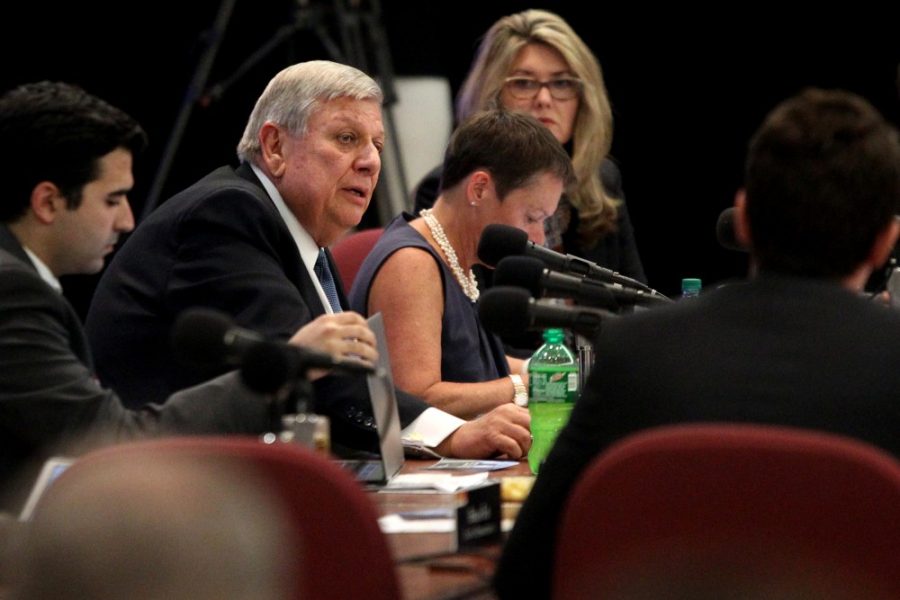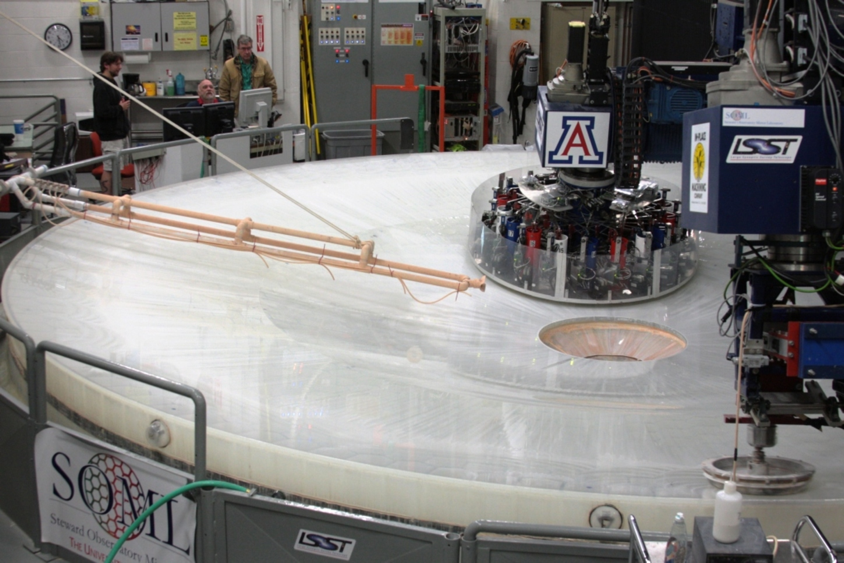The Arizona Board of Regents has announced the names of two finalists for the presidency of the UA amid calls for more transparency and assertions by legal experts that the regents are wrong on the law by refusing to release the full list of candidates who were interviewed by the search committee.
Robert Robbins, President and CEO of Texas Medical Center, and Sethuraman Panchanathan, the executive vice president and innovation officer of ASU’s Knowledge Enterprise Development, were announced as the only candidates after the regents met for several hours in a private executive session Tuesday afternoon.
The two finalists will be interviewed by the regents March 6. One is then expected to be chosen by the regents and make a campus visit March 8 before assuming the presidency during the summer.

After announcing the two finalists, the regents spent the remainder of the meeting thanking one another on a search well done.
“Our search committee did an outstanding job looking at hundreds of people,” said Ron Shoopman, who co-chaired the committee.
According to the regents, the process was as open as it could have possibly been.
“We wanted to be as inclusive and diverse as possible,” said Bill Ridenour, chair of the search committee. “It was not a quote-unquote closed search.”
The Daily Wildcat has had three public records requests denied and two others were answered simply with the press release that was made available to the public on Tuesday.
This press release only listed the two candidates, but, according to both Eileen Klein, the president of the board of regents, and Ridenour, other names had been nominated by the committee, but “those prospects may have chosen not to be candidates.”
Ridenour then rolled back his statement, saying only two candidates had been forwarded by the committee at all.

Per Arizona law, the names of candidates should have become public after interviews that took place earlier this month, according to legal and public records experts. The regents have refused to release these names, even though this action is inconsistent with a 1991 Arizona Supreme Court ruling.
“I understand that the committee is trying to protect confidentiality, but I do think they’re running into the teeth of this ruling,” said Derek Bambauer, professor of law at the UA. “I think the ruling is actually pretty clear on this point.”
This ruling makes the legal distinction between a “prospect” and “candidate.” When the search only has a pool of prospects, those names are not public records. However, these prospects become candidates after they are seriously considered for the job and interviewed; at which point, those names become public record.
Now, the regents are refusing to release all the names forwarded by the board, according to Ridenour’s statement.
According to the regents, the candidates that participated in the interviews and had their names forwarded to the board are still prospects because they do not consider themselves to be candidates.
“I think they have mischaracterized the ruling,” Bambauer said. “Because they’re conflating ‘candidates’ and ‘finalists.'”
RELATED: Rise of the executive headhunters
The UA presidential search has been ongoing since September of last year. However, Tuesday’s meeting was the first glimpse the public has had of any information concerning the candidates. All other meetings have been conducted in executive session.
This is because of the regents decided to have confidential search process, a method that has become more and more common when hiring university presidents.
“I think, nationally, all of the searches are going more towards this type of search where very few are advanced to the final governing board,” said Ridenour.
However, many on campus have problems with conducting the search in this fashion.
“It’s a growing practice. But it is not the right thing to do,” said David Cuillier, director of the School of Journalism at the UA.
There have also been anxieties on campus about lack of student and faculty involvement.
“They could have put more students and faculty on the search committee,” said Jasmine Sears, director of operations for Innovate UA. “That way, the University of Arizona is better represented when choosing our next president.”
According to the board, the guidelines used to withhold this information are perfectly within legal boundaries.
“Our search guidelines were very well thought out,” Ridenour said. “So we attempted to adhere to those guidelines, taking into account all the legal ramifications.”
RELATED: Campus concerns surround secrecy of search for next UA president
According to the guidelines, “The search advisory committee will provide aggregated, non-personally identifiable information to the board and to the public with respect to all persons whose qualifications are being reviewed, including but not limited to the following: gender; age; race, ethnicity; current or prior positions held in academia or elsewhere; educational background; and geographic diversity.”
No such information has been provided to the Daily Wildcat or posted on the regents’ website. In January, Ridenour would only tell the Wildcat that the pool was “diverse” and the prospects were from all across academia and the business sector.
According to the regents, the law was not only followed, but this should be the new model for presidential searches.
“I think going forward that [this] sets the new gold standard for how searches are to be conducted,” Ridenour said.
The regents are now taking public comments on the two finalists at the bottom of the search committee website, which can be found here.
Follow J.D.Molinary on Twitter.









